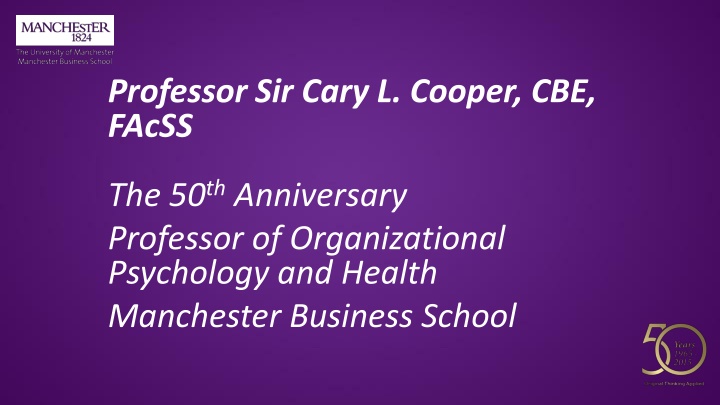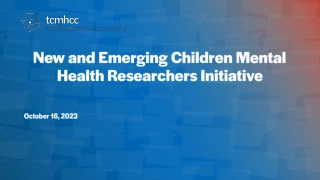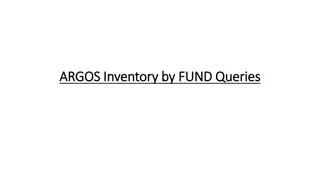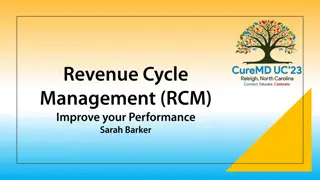
Long-Term Absence and Mental Health Costs in the Workplace
Explore the causes of long-term absence for non-manual workers in various sectors, along with the estimated annual costs to UK employers due to mental ill-health. Discover insights on presenteeism, sickness presenteeism, and the critical business issues related to mental health impact on employees and organizations. Uncover symptoms of stress and sources of stress affecting individuals in the workplace.
Download Presentation

Please find below an Image/Link to download the presentation.
The content on the website is provided AS IS for your information and personal use only. It may not be sold, licensed, or shared on other websites without obtaining consent from the author. If you encounter any issues during the download, it is possible that the publisher has removed the file from their server.
You are allowed to download the files provided on this website for personal or commercial use, subject to the condition that they are used lawfully. All files are the property of their respective owners.
The content on the website is provided AS IS for your information and personal use only. It may not be sold, licensed, or shared on other websites without obtaining consent from the author.
E N D
Presentation Transcript
Professor Sir Cary L. Cooper, CBE, FAcSS The 50th Anniversary Professor of Organizational Psychology and Health Manchester Business School
Causes of Long-Term Absence for Non-Manual Workers 2015 All Manufacturing & production Private services Public services Non-Profit 50 46 79 60 Stress 58 51 49 44 64 49 Acute medical conditions 37 45 61 52 Mental ill-health 49 38 35 29 49 44 Musculoskeletal injuries 32 25 32 24 33 23 36 31 26 22 Back pain Recurring medical conditions 25 35 19 25 25 Injuries not related to work 17 16 18 13 19 17 9 17 21 15 Minor illness Pregnancy-related absence Percentage of respondents citing this reason as leading cause (base 394) Source: CIPD Absence Management Survey
Estimated Annual Costs to UK Employers of Mental Ill-Health (Sainsbury Centre for Mental Health, 2007) Cost per average employee ( ) 335 Total cost to UK employers ( billion) 8.4 Per cent of total 32.4 Absenteeism 605 15.1 58.4 Presenteeism 95 2.4 9.2 Turnover 1035 25.9 100 Total
Presenteeism Health Good Healthy & present Health Not good Unhealthy and present Sickness Presentees No absences Some absences Healthy and not always present Unhealthy and not always present
How common is sickness presenteeism? Health Good Health Not good No absences Some absences 35% 13% 28% 24% N=39,000 employees from general working population (UK)
A Critical Business Issue Mental health costs the UK 70bn per year, equivalent to 4.5% of GDP Mental ill-health costs each employer 1,035 per employee, per year 15.2m sick days per year due to stress, anxiety or depression Failure to unlock discretionary effort costs UK business 6bn Only 2 in 5 employees working at peak performance
Symptoms of Stress Disease Sources of Stress Intrinsic to the Job Individual Depressed mood Excessive drinking Irritability Chest pains High blood pressure Coronary heart disease Role in the organisation Relationships at work Career development Organisational structure and climate Home/work Interface Mental illness Individual Prolonged strikes Organisational Frequent and severe accidents High absenteeism High labour turnover Poor quality control Apathy
Intrinsic to the Job Too much work Too little work Time pressures and deadlines Poor physical working conditions Mistakes Too many decisions - quantitative - qualitative
Variable Workload High Workload Poor Procedures by Pilots Responsibility for Lives Shiftwork Hours Training Others Stressed Air Traffic Controller Increased Risk of Coronary Artery Disease
Role in the Organisation Role ambiguity Role conflict Too little responsibility Responsibility for People Responsibility for things Lack of managerial support Organisational boundaries
Patients perceive as inflictor of pain Job interfering with family life DENTIST Anxious Personality Coping with difficult patients Trying to manage a practice Administrative duties
Relationships Relationships with boss Relationships with colleagues Relationships with subordinates Difficulties in delegating Personality conflicts
CareerDevelopment Over promotion Under promotion Lack of job security Fear of redundancy or early retirement
Respondents Perceived Security in Current Job (Source: CMI Economic Outlook April 2010)
Organisational Structure and Climate Restrictions on behaviour No effective consultation or communication Uncertainty Loss of identity Lack of participation
Organisations Interface with Outside Divided loyalties Conflict of work with family demands Intrusion of problems outside work-economic, life crisis
Comprehensive Programme Interventions Primary Dealing with the stressors Selection policies & induction Workflow planning (task allocation, matching resource to work flow demand, etc) Work Life Balance initiatives Management Development Programmes Secondary Helping people to cope Resilience training Annual reviews & appraisals and personal development plans Healthy Lifestyle & Well-being programmes Tertiary Picking people back up Employee Assistance Programmes
CIPD Health and Wellbeing at work report, 2018: Employers with a wellbeing initiative have: 44% better employee morale & engagement 31% lower sickness absence rate 60% of organisations do not yet have a wellbeing strategy
There is a business case for wellness programmes Price Waterhouse Cooper Research based on 55 companies
Making the business case If mental illness costs employers 28.3 billion per annum in 2009 Prevention and early identification of problems, should save employers at least 30% 8 billion per annum www.nice.org.uk/nicemedia/pdf/PH22Guidance.pdf






















